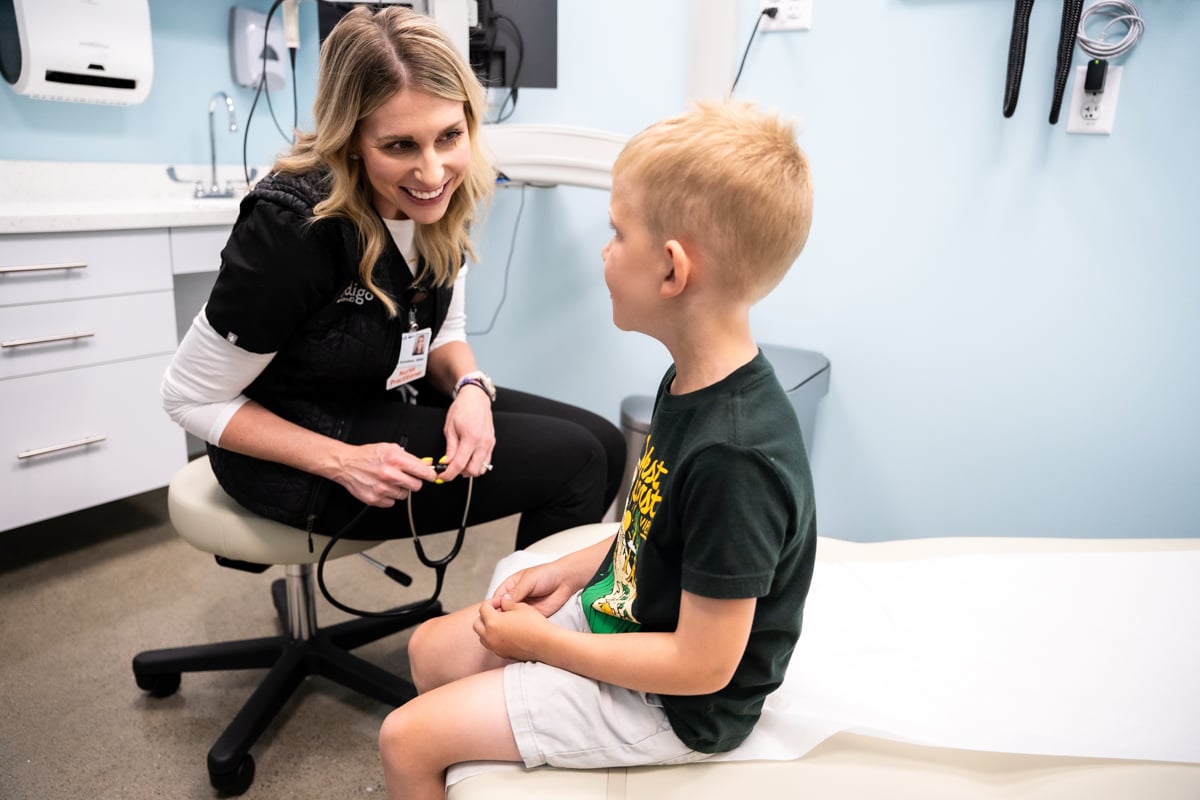As Halloween creeps closer, displays of ghostly webs and spooky spiders are making their seasonal return. But beyond the eerily festive décor, real eight-legged visitors are spinning their way into homes and yards this time of year, as fall marks mating season for many species.
While most spiders in our region are harmless, a few can deliver a painful bite if threatened. Knowing how to identify common species, prevent close encounters, and care for minor reactions can help you steer clear of a real scare this season.
How common are spider bites?
Spider bites are rare – especially those that can harm you. While most spiders have venom glands, they rarely bite humans unless provoked or trapped against the skin. And even then, most spider venom isn’t harmful to people or pets. In most cases, the worst you can expect is a mild, localized reaction.
You may be at greater risk of encountering a spider and potentially being bitten if you:
- Work outdoors, such as in landscaping, farming or construction.
- Spend time hiking, camping or doing yardwork.
- Play or work in leaf piles, woodpiles or around rocks.
- Work in crawl spaces, attics, basements or other areas spiders may inhabit.
What are the most common spiders in Washington and Idaho?
Washington is home to more than 800 spider species and Idaho has several hundred. The majority are considered harmless.
Common non-harmful species in the region include:
- Giant house spiders. Big, fast, and often mistaken for more dangerous creatures, these non-aggressive spiders help keep unwanted pests in check.
- Wolf spiders. These hairy, long-legged ground dwellers – which don’t spin webs – look scary but rarely bite. They are often found in leaf litter, woodpiles, or burrows.
- Cellar spiders. Affectionately known as “daddy longlegs,” these harmless spiders prefer dark, quiet corners in basements and garages.
- Jumping spiders. Small and compact with excellent vision, these spiders can leap up to 40 times their body length. They are often mistaken for black widows because of their compact, black bodies. (Their legs are shorter and thicker than their more dangerous cousins.) While they prefer to stay outdoors, they may come inside to hunt for food.
- Orb-weaver spiders. Known for their beautiful, wheel-shaped webs, orb-weavers are commonly found in gardens, fields, and wooded areas.
There are a few spiders you should watch out for. Potentially harmful species include:
- Black widow spiders. Recognizable by their shiny black bodies and red hourglass markings, black widows deliver venom that can cause severe pain and muscle cramps.
- Yellow sac spiders. Pale yellow or light beige and most active at night, these spiders can cause mild irritation, redness, or blistering if they bite.
- Hobo spiders. Once considered dangerous, the hobo spider is now regarded as mostly harmless. However, their bites may cause minor pain or allergic reactions in sensitive individuals.
Good guys in disguise. Spiders may make your skin crawl, but they’re actually more helpful than harmful. They help control mosquitoes, flies and other insects that can carry disease or damage plants. When possible, gently relocate them outside instead of squashing them.
What are the signs of a spider bite?
Symptoms vary depending on the spider and your sensitivity. Most spider bites cause only mild irritation, including redness, swelling, itching, and a small bump or blister at the bite site.
More serious reactions, such as from a black widow bite, may include:
- Sharp pain at the site followed by numbness
- Difficulty breathing
- Droopy or swollen eyelids
- Headache
- Nausea and vomiting
- Muscle cramps or stiffness (especially in the stomach, shoulders or back)
- Sweating or chills
- Widespread rash or intense itching
Small children, older adults and individuals with weakened immune systems are more likely to experience severe reactions to spider bites.
How can I prevent spider bites?
The best way to avoid being bitten by a spider is to try to avoid them altogether – which is exactly what they prefer, too. A few precautions can help keep them at a safe distance:
- Wear long sleeves and pants when working outdoors or in wooded areas.
- Shake out shoes, clothing, hats and gloves, especially if they’ve been stored in a basement or garage.
- Store firewood outdoors and inspect it for spiders before bringing it indoors.
- Wear gloves when gardening, carrying wood, or moving rocks.
- Apply an EPA-registered insect repellent when outdoors.
- Keep storage areas organized and uncluttered.
- Seal cracks or crevices around doors, windows, and foundations.
- Regularly check dark or damp areas, such as attics, crawl spaces, and basements.
- Use a vacuum or broom to remove webs and egg sacs promptly.
What should I do if I’m bitten by a spider?
In most cases, spider bites are mild and can be treated at home. If you do experience symptoms, try these simple remedies:
- Clean the area with soap and warm water.
- Apply a cold compress or ice pack to the bite area for 10 minutes at a time to reduce pain and swelling. (Always place a cloth between the ice and your skin.)
- Elevate the affected area if possible.
- Take an over-the-counter pain reliever such as ibuprofen (Advil, Motrin) or acetaminophen (Tylenol).
- Use an antihistamine such as diphenhydramine (Benadryl) or loratadine (Claritin) to ease itching or swelling.
- Monitor the bite for changes, including spreading redness, increased swelling or drainage, which may indicate infection.
When should I seek medical treatment for a spider bite?
Most spider bites heal on their own with home care. But if your symptoms worsen or new ones appear, check in with an Indigo Urgent Care clinician – especially if you notice any of the following warning signs:
- Increased redness or swelling
- Pus, warmth or other signs of infection
- Pain that spreads beyond the bite area
- Expanding skin discoloration
- Fever, chills, or muscle aches
Even if your bite turns out to be more trick than threat, Indigo makes it easy to get care that’s fast, friendly and never frightening. Walk into of our convenient neighborhood locations in Washington or Idaho or book a same-day or next-day appointment online. Prefer to skip the trip to the clinic? Indigo also offers Virtual Care appointments so you can connect with a clinician from the comfort of home.
In person or virtually, we’re here 8 am to 8 pm every day, including holidays and weekends.
When is a spider bite an emergency?
Some people have severe allergic reactions to spider bites, including anaphylactic shock. In rare cases, a spider bite can be serious and require immediate attention. Go to your nearest emergency room or call 911 if you experience:
- Chest pain
- Swelling of the face or mouth
- Difficulty breathing or swallowing
- Fainting or lightheadedness
- Abdominal pain or vomiting
- Widespread rash or flushing
Want to learn more about spiders in the region? (Spoiler alert: A sleeping person does not swallow eight spiders per year.) Check out these resources from Washington State University Extension and University of Idaho Extension:


